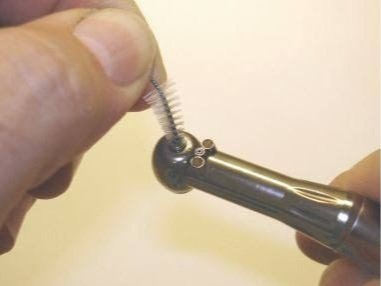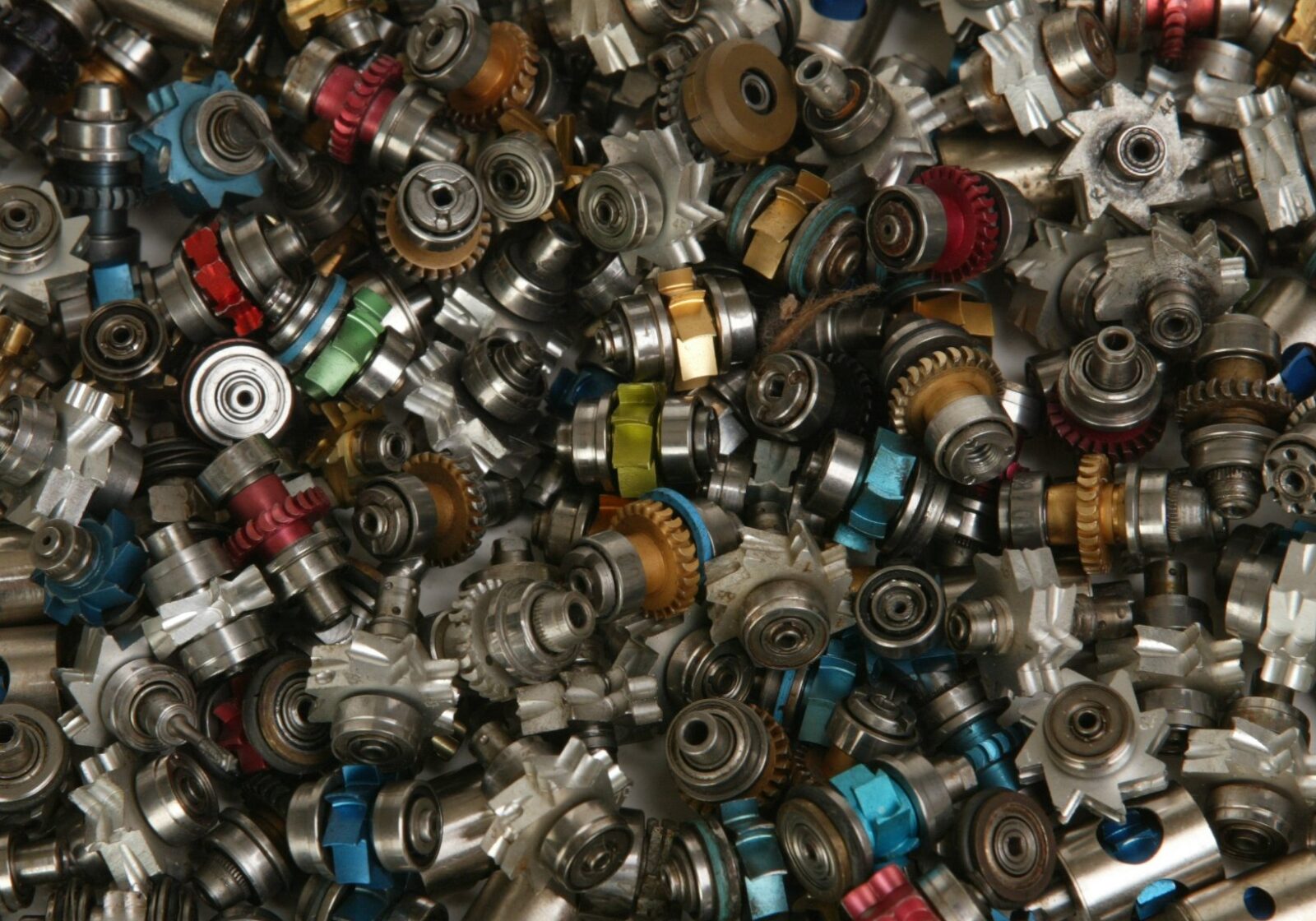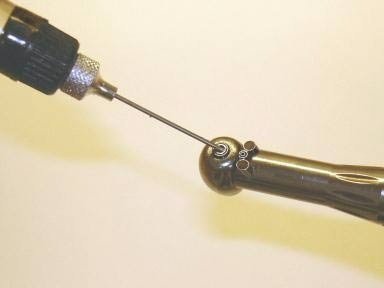Essential Tips for Dental Handpiece Maintenance: Keep Your Equipment Running Smoothly
In the bustling world of dentistry, the dental handpiece is an unsung hero, tirelessly working to deliver precise and efficient patient care. Yet, like any tool that sees constant use, it requires regular attention to maintain its performance and longevity. Effective tips for for dental handpiece maintenance is not just about ensuring smooth operations; it’s about safeguarding the quality of care you provide. Imagine the frustration of a malfunctioning handpiece mid-procedure or the potential impact on patient satisfaction. Investing time in proper maintenance can prevent these scenarios, ensuring your equipment remains in optimal condition.
Regular Cleaning
Regular cleaning of dental handpieces is a cornerstone of effective equipment maintenance, crucial for ensuring that these vital tools continue to operate at peak performance. Each use of a dental handpiece can lead to the accumulation of debris, which, if not promptly and thoroughly removed, can impair the functionality of the device and increase the risk of bacterial contamination. A meticulous cleaning routine helps prevent this buildup, ensuring that each handpiece remains hygienic and ready for use. By eliminating debris and potential pathogens, regular cleaning not only extends the life of the equipment but also upholds the high standards needed for safe and effective patient care.
Incorporating consistent cleaning practices into your daily routine is an investment in the longevity and reliability of dental handpieces. This involves using appropriate cleaning solutions and tools to ensure the complete removal of contaminants without damaging the equipment. Regular cleaning can prevent the deterioration of internal components, reducing the frequency of costly repairs and replacements. Moreover, maintaining clean handpieces contributes to smoother operations during dental procedures, enhancing the overall patient experience. By prioritizing cleanliness, dental professionals can ensure their instruments are always in top working condition, ultimately leading to improved outcomes and sustained patient trust in the quality of care provided.

Lubrication
Lubrication is a critical aspect of dental handpiece maintenance, playing a vital role in ensuring these essential tools function smoothly and efficiently. Regular lubrication helps to significantly reduce friction between the moving parts of the handpiece, which is crucial for preventing wear and tear that can lead to equipment failure. By minimizing friction, lubrication ensures that the handpiece operates at optimal performance levels, providing the precision and reliability required during dental procedures. This practice not only extends the lifespan of the equipment but also minimizes the risk of unexpected breakdowns, which can disrupt the workflow and affect patient care.
Consistent lubrication practices are an investment in both the longevity and effectiveness of dental handpieces. By using the appropriate lubricants and following recommended guidelines, dental professionals can protect their equipment from overheating and mechanical stress. This proactive approach reduces the need for frequent repairs and replacements, thereby saving time and resources in the long run. Moreover, well-lubricated handpieces contribute to a smoother, more efficient performance during dental treatments, enhancing the practitioner’s ability to deliver high-quality care. Prioritizing regular lubrication as part of routine maintenance helps ensure that dental handpieces remain in excellent working condition, supporting consistent and successful patient outcomes while fostering trust and reliability in the services provided.
Timely Repairs
Timely repairs are an essential component of dental handpiece maintenance, ensuring that these critical tools remain reliable and effective. Addressing repairs promptly can prevent minor issues from escalating into major breakdowns that disrupt dental operations. When a handpiece starts to show signs of wear or malfunction, such as unusual noises or reduced performance, immediate attention can mitigate the risk of more significant damage. By maintaining a proactive approach to repairs, dental professionals can ensure that their equipment continues to operate efficiently, minimizing downtime and avoiding costly disruptions in patient care.
Incorporating timely repairs into regular maintenance routines not only extends the lifespan of dental handpieces but also supports consistent performance during procedures. This practice allows dental teams to maintain a high standard of care, as well-functioning equipment is crucial for precision and patient comfort. Investing time and resources in timely repairs can lead to long-term savings by reducing the need for frequent replacements and preventing unexpected breakdowns that could compromise patient treatment schedules. Ultimately, prioritizing timely repairs enhances the overall quality of dental services and builds trust with patients, reinforcing the practice’s commitment to excellence and reliability in dental care.

Proper Storage
Proper storage of dental handpieces is crucial for maintaining their functionality and prolonging their lifespan. After each use, it is important to store handpieces in a clean, dry environment to prevent damage from moisture and contaminants. Exposure to dust or moisture can lead to corrosion and mechanical failure, which compromises the equipment’s performance. Utilizing designated storage cases or racks ensures that handpieces are kept organized and protected from physical damage. This practice not only safeguards the handpieces but also facilitates quick access during dental procedures, enhancing the efficiency and flow of operations.
In addition to preventing physical damage, proper storage significantly reduces the risk of contamination. By ensuring that handpieces are stored in a controlled environment, dental professionals can maintain the sterility of their equipment, which is vital for patient safety. This approach minimizes the potential for cross-contamination between patients, upholding high standards of hygiene within the practice. Proper storage also ensures that handpieces remain in optimal working condition, ready for immediate use when needed. By prioritizing storage as a key component of maintenance, dental practices can achieve a seamless integration of hygiene and efficiency, ultimately leading to improved patient outcomes and maintaining trust in the quality of care provided.
Using the Right Tools
Using the right tools for dental handpiece maintenance is fundamental to ensuring these essential instruments function at their best. Utilizing tools specifically designed for cleaning and maintaining handpieces allows for precise handling and care, which is crucial in preventing inadvertent damage. Generic or incorrect tools can cause wear or even damage the delicate components of handpieces, leading to costly repairs or replacements. By opting for the appropriate tools, dental professionals can perform maintenance tasks with confidence, knowing they are preserving the integrity and performance of their equipment. This careful approach not only extends the lifespan of the handpieces but also supports a smooth operation in dental procedures, enhancing the overall efficiency and reliability of the practice.
In addition to preventing physical damage, using the correct tools ensures that maintenance tasks are performed efficiently and effectively, maintaining the handpiece’s performance levels. Proper tools help in achieving thorough cleaning and accurate lubrication, which are essential for optimal functionality. This meticulous maintenance process contributes to reduced downtime and fewer disruptions in dental operations, enabling dental practitioners to focus on delivering high-quality care to their patients. Furthermore, by integrating the right tools into regular maintenance routines, dental practices can uphold high standards of equipment care, fostering trust and credibility with patients through consistently reliable service. Prioritizing the use of appropriate tools in dental handpiece maintenance ultimately translates into enhanced patient outcomes and a solid reputation for excellence in dental care.

Staff Training
Effective staff training is a cornerstone of dental handpiece maintenance, ensuring that these critical tools are handled with the utmost care and precision. Proper training equips dental staff with the knowledge and skills necessary to perform routine maintenance tasks correctly, such as cleaning, lubrication, and storage. This reduces the likelihood of errors that could lead to damage or premature wear of the equipment. By understanding the specific requirements and intricacies of handpiece maintenance, staff can more confidently manage these tasks, ensuring the equipment remains in optimal condition. This attention to detail not only extends the lifespan of the handpieces but also enhances their performance during dental procedures, leading to better patient outcomes and smoother operations.
Moreover, well-trained staff contribute to a culture of efficiency and reliability within the dental practice. They are better prepared to detect early signs of malfunction or wear, enabling timely interventions that prevent more significant issues down the line. This proactive approach minimizes disruptions and downtime, allowing for a seamless flow of dental procedures. Training programs that focus on the latest maintenance techniques and industry best practices also ensure that staff stay updated, which is crucial for maintaining high standards of care. Ultimately, investing in staff training fosters a sense of accountability and professionalism, reinforcing the practice’s commitment to excellence in patient care and equipment management.
Conclusion
Diligent maintenance of dental handpieces is a small investment that pays off in efficiency and enhanced patient care. By implementing these essential tips, you not only prolong the lifespan of your handpiece but also ensure that your practice runs smoothly and effectively. Consistent maintenance practices reflect a commitment to excellence and patient satisfaction, forming the backbone of a successful dental practice. With proper storage, the use of appropriate tools, and thorough staff training, dental professionals can maintain the reliability and performance of their handpieces, ultimately leading to better patient outcomes and a strong reputation for quality care. So make sure to prioritize maintenance as a vital aspect of your dental practice for long-term success.
https://www.google.com/maps?cid=5687140069355702096



